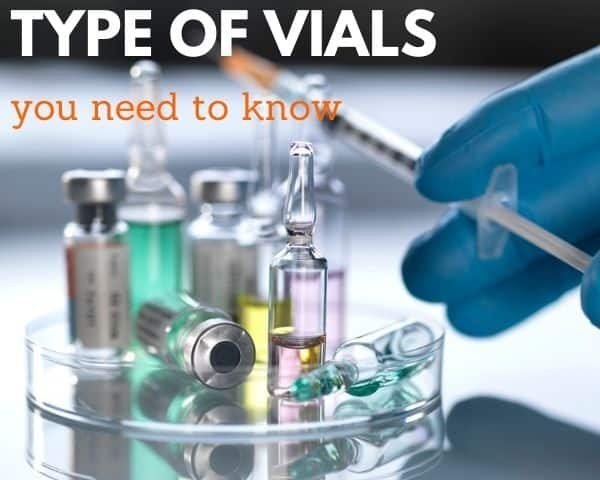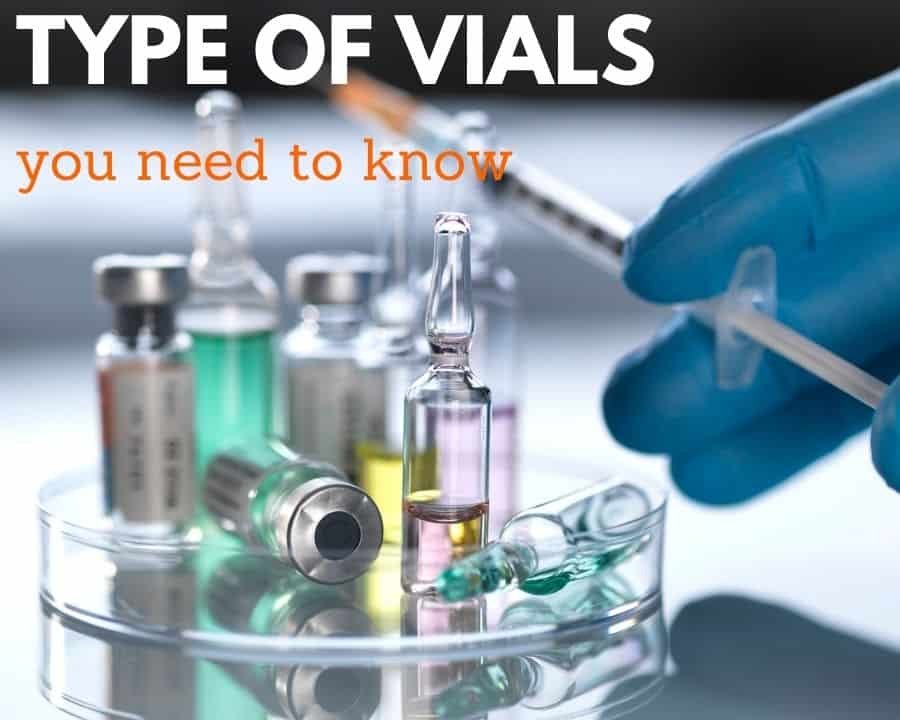Here is nothing more critical than choosing the right glass vial when doing experiments in the lab. In addition to improving the efficiency and safety of the testing process, we can also observe and improve the effectiveness of the testing if we pay attention to the conditions of demand (sample), including the temperature, requirements for acidity and alkalinity resistance of solutions, and coefficient of expansion. In order to easily choose the right vial for a test, it will be more likely to be helpful if we take into account the conditions before we do the test. The following is an explanation of a few types of vials that are available in the market.
As you can see there are mianly 3 types of vials that are available on the market. There are USP Type 1, Type 2 and Type 3 vials. I am sure you are wondering what makes them different and what USP stands for?
USP stands for United States Pharmacopeia and it is the standard by which chemicals are classified according to their chemical durability. To find out more, please take a look at the chart below.
| Glass Type | |||
|---|---|---|---|
| Chemical composition and properties | Type 1 (Neutral) | Type 1 (Borosilicate) | Type 2 and 3 (Soda-lime) |
| B2O3(%) | ≥8 | ≥5 | <5 |
| SiO2(%) | Ca.75 | Ca.71 | Ca.70 |
| Na2O+K2O(%) | Ca.4-8 | Ca.11.5 | Ca.12~16 |
| CaO+MgO+BaO+SrO(%) | Ca.5 | Ca.5.5 | Ca.12 |
| Al2O3(%) | 2~7 | 3~6 | 0~3.5 |
| Coefficient of Thermal Expansion 10-6K-1 (20~300℃) | 3.5~6.1 | 6.2~7.5 | 7.6~9.0 |
| Hydrolytic resistance of glass grains at 121℃ | Level 1 | Level 1 | Level 2 |
| Hydrolytic resistance of glass grains at 98℃ | Level HGB 1 | Level HGB 1 or 2 | Level HGB 2 or 3 |
Type 1 (Neutral)
Known as Nertual, this type of glass is a Borosilicate Glass, also known as Pyrex.
Furthermore, this glass is resistant to hydrolysis in addition to being able to be used for injectable preparations that have acidic, neutral, and alkaline pH levels. It has a high thermal shock resistance, chemical resistance, as well as a high level of durability.
In this case, if there was a very high demand for vials, it was likely that Type 1 (Neutral) would be the best option.
Type 1(Low Borosilicate)
As a matter of fact, this is the most common type of test used in laboratory testing. It is also belongs to Borosilicate Glass, but with less composition of B2O3 compared to Neutral. Commonly, the more B2O3 Containted, the more stability of glass durability will be.
If you’re looking for an economical option that can withstand temperature variations and alkaline pH, but still remain stable under laboratory conditions, then this type is what you want.

Type 2 and 3 (Soda-lime)
Among the glass types found in laboratory vials, soda lime glass is the most common, especially when it comes to amber colored vials. It has been reported that approximately 90% of all amber colored vials are made from soda lime glass. The reason for this is that this type of vial has a moderate hydrolytic resistance and is a very economical option. In addition, it is very widely used and is compatible with most items, including: food, beverages, household chemicals, etc.
Soda lime glass is often referred to as Type-3 glass due to its chemical composition. It should be noted, however, that once the surface has been treated, a high level of hydrolysis stability can be achieved, which is known as Type 2.
The only thing we have to know at this stage is that Type 2 and Type 3 are soda-lime-related.
Identify the different types of amber vials
Possibly you are wondering whether there is a way that can be used to identify vials from the sight alone? I am going to explain to you the process of identifying directly.
- When they are observed visually, soda-lime and Netural amber appear very similar to one another, while low borosilicate amber appears lighter.
- To distinguish soda-lime from Netural amber, the behind one is still darker than the front one.
By observing the steps 1 and 2, it is clear that you can use this simple guide to identify more than 80% of vials on the market. It also provides a simple approach for identifying the right product for you.
Conclusion
In this article, we are going to describe the different types of vials, glass compositions, and chemical resistance associated with each type of vial. Rather than directly telling you which type of vial is most suitable for your laboratory testing, our goal is to assist you in identifying what type of vial is most appropriate for you.
If the vial is used for storage only, then there is no need to use borosilicate or higher-level glass. Most likely, soda-lime glass can be used instead.
For more information about our articles if you are interested in learning more, please click here to read on.












